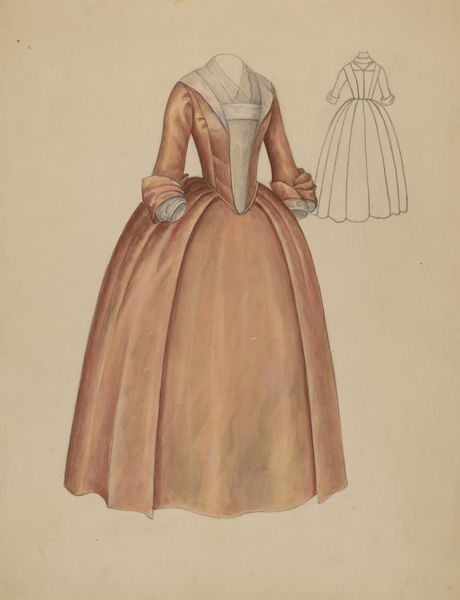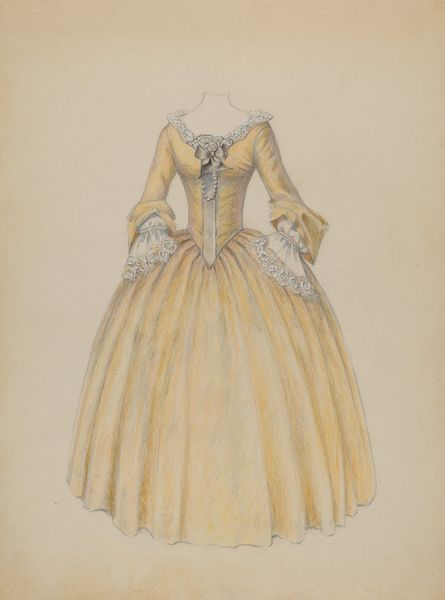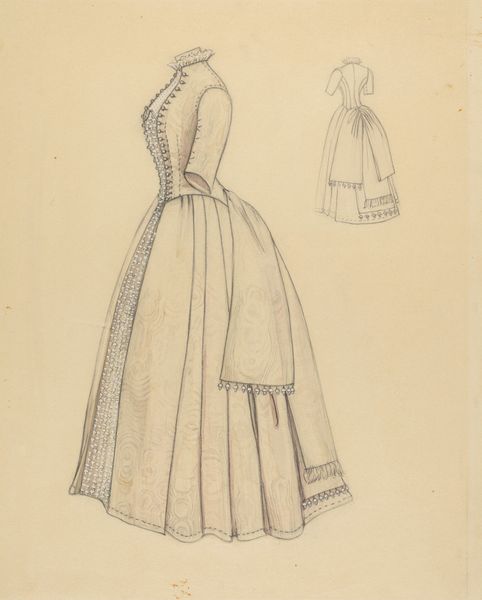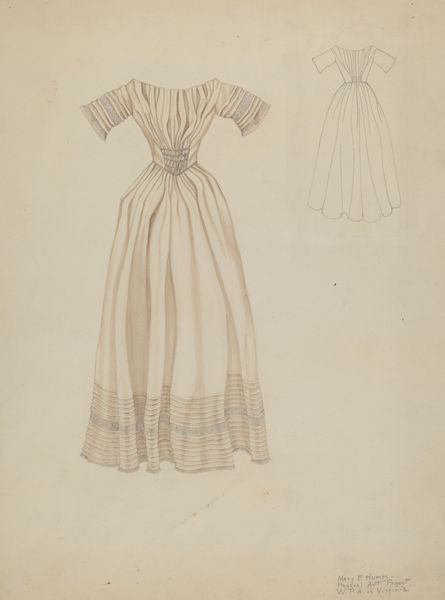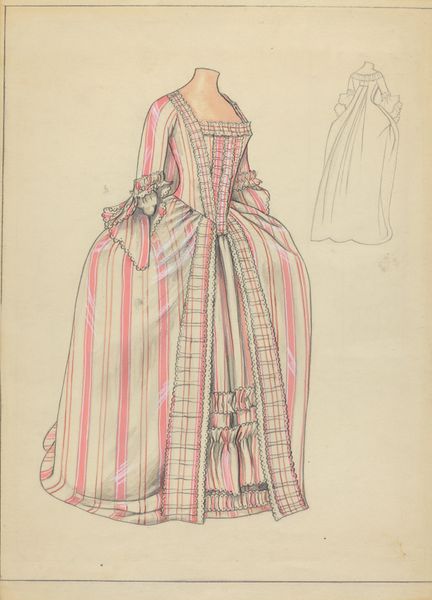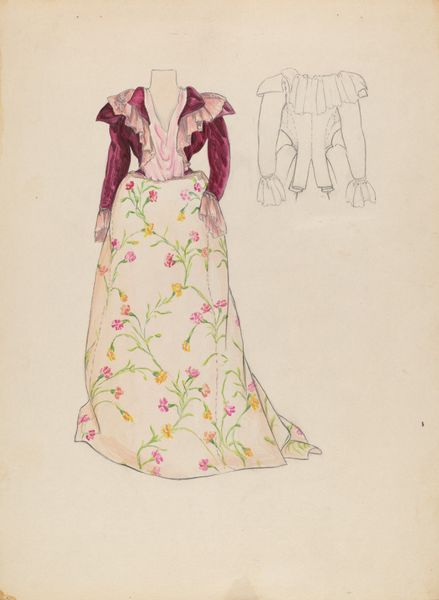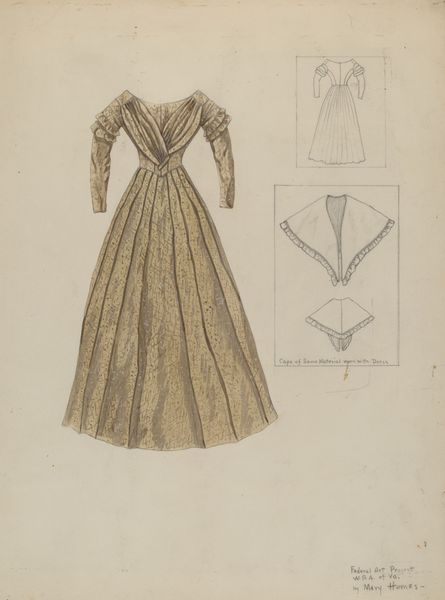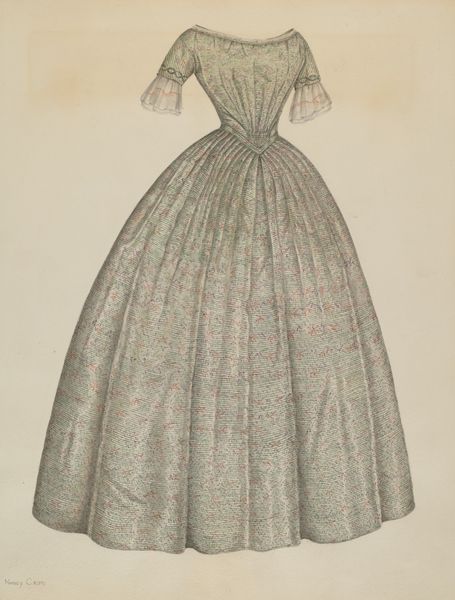
drawing, pencil
#
portrait
#
drawing
#
pencil sketch
#
figuration
#
pencil
Dimensions: overall: 30.8 x 23.3 cm (12 1/8 x 9 3/16 in.)
Copyright: National Gallery of Art: CC0 1.0
Curator: Welcome. Before us is "Woman's Dress," a drawing rendered in pencil by Jessie M. Benge, circa 1940. Editor: It projects a feeling of understated elegance, wouldn’t you say? The lines are clean, precise... and there's a muted palette that adds to the refined impression. Curator: Absolutely. Note how Benge used line weight and shading to delineate form and volume. Observe the precise control evident in the depiction of the folds and gathers, achieving a textural depth that implies luxurious fabrics. The composition itself is also intriguing—a complete view of the dress, alongside a rear sketch that demonstrates shape. Editor: Precisely, the dress signifies the restrictive codes that governed women’s appearances. This isn’t merely a dress; it’s a symbol of the gendered expectations imposed on women, especially during this historical period, shaping how they were perceived and interacted with in society. Consider the societal context—the looming war, changing gender roles, yet this image harkens back to something almost... prim. Curator: Your point is well-taken regarding its cultural implications, though I’d argue that Benge is more interested in exploring formal pictorial elements and surface qualities. See how the varying pencil strokes catch the light and emphasize the dress's three-dimensional presence on the page. She really is mastering rendering techniques here! Editor: But the artist's intentions, are always a product of the societal context! The formality and restricted movement suggested by the dress also subtly reflect power dynamics. And yet, by memorializing it, she prompts a consideration of that female figure, caught within those expectations, but somehow now existing apart from them, outside of time... Curator: Hmm, indeed. A lot of complex lines in a dress, literally, and metaphorically, it seems. Editor: It speaks volumes about what it meant to be a woman in 1940. Thanks for expanding my perception!
Comments
No comments
Be the first to comment and join the conversation on the ultimate creative platform.
